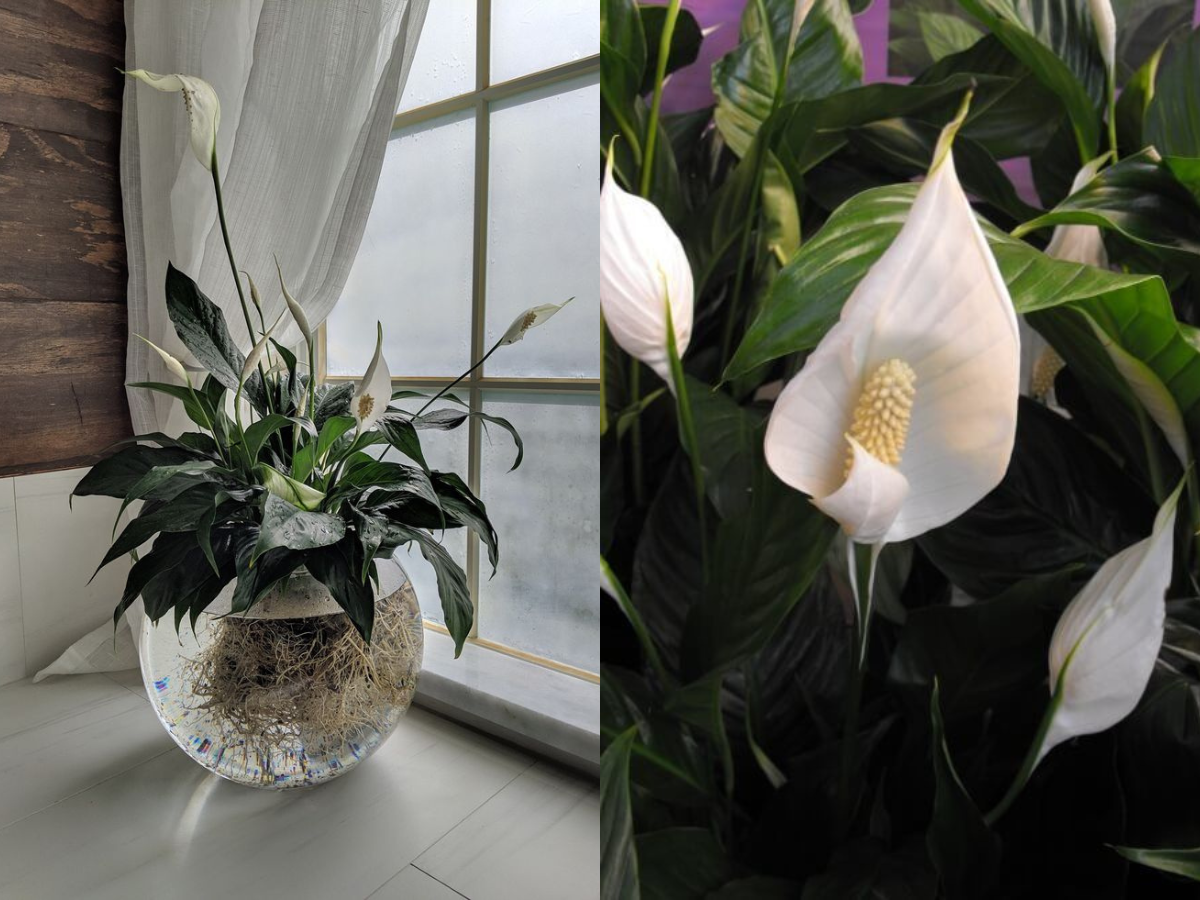How to repot a Peace Lily – Learn the exact step-by-step process to repot your Peace Lily (Spathiphyllum) the right way. Based on real experience, this guide covers the best time, soil mix, pot size, root care, and post-repotting care to help your plant stay healthy and grow faster.
I have been growing Peace Lilies for years, and repotting them is one of the most rewarding gardening activities I do. These elegant plants, with their lush green leaves and white blooms, often outgrow their pots quickly, especially if they’re thriving in the right conditions. In this post, I’ll share my personal experience and step-by-step.
IN THIS ARTICLE
About Peace Lily (Spathiphyllum)
The Peace Lily is one of the most popular indoor plants due to its air-purifying properties and low maintenance needs. It prefers indirect sunlight and thrives in humid indoor environments. When the roots start circling the pot or the soil dries out too quickly, it’s time to repot.
Why I Repot My Peace Lily
From my experience, Peace Lilies usually need repotting every 1 to 2 years. I notice signs like yellowing leaves, roots poking out from the drainage holes, or the plant drying out faster than usual. That’s when I prepare to move it into a bigger, healthier space.
When is the Right Time to Repot?
- Spring or early summer is the best time.
- Avoid repotting during winter when the plant is in a resting phase.
- I usually repot when the plant is actively growing to reduce stress.
Tools You’ll Need
- A new pot (2 inches larger than the current one)
- Fresh, well-draining potting mix
- Watering can
- Gardening gloves
- Pruning shears (optional)
- Trowel or spoon
Step-by-Step Guide: How to Repot a Peace Lily
Step 1: Prepare the New Pot
Choose a pot that is slightly larger (1-2 inches) than the old one and has good drainage holes.
- Fill the bottom with a fresh potting mix – I use a mix of peat moss, perlite, and compost.
- Ensure the base is moist but not soggy before placing the plant.
Step 2: Remove the Peace Lily from the Old Pot
This step requires care.
- Hold the plant gently at the base.
- Tip the pot sideways and tap the sides to loosen the roots.
- Carefully pull the plant out without tugging harshly.
My Tip: If the plant is rootbound, gently squeeze the sides of a plastic pot or use a trowel to help loosen it.
Step 3: Loosen the Roots
Once the plant is out:
- Shake off excess soil.
- If the roots are tightly wrapped, gently tease them apart with your fingers.
- Trim any brown, mushy, or overly long roots using sterilized pruning shears.
Personal Note: Always avoid cutting too much. Only dead or damaged roots should be removed.
Step 4: Place the Plant in the New Pot
- Center the Peace Lily in the new pot.
- Fill in around the roots with fresh potting mix.
- Press the soil gently but do not compact it too much.
- Leave about an inch of space from the top of the pot for watering.
Step 5: Water Thoroughly
- Water the plant well until it starts draining from the bottom.
- This helps settle the soil and remove air pockets.
Tip from Experience: I always water gently using a watering can with a spout to avoid damaging the newly set roots.
Post-Repotting Care
After repotting, your Peace Lily may look a little sad or droopy – this is normal.
Here’s how I care for it:
- Keep it in indirect sunlight – avoid direct sun for a few days.
- Maintain humidity – I place a tray of water nearby or mist the leaves lightly.
- Avoid fertilizing for 4-6 weeks – let the plant adjust first.
- Water only when the top 1 inch of soil feels dry.
In about 1 to 2 weeks, the plant perks up again, and by 4 weeks, it usually shows new growth.
How to Grow Peace Lily in Water – My Own Gardening Experience
My Personal Tips for Successful Repotting
- Use sterile tools: Always clean your shears and hands to prevent disease.
- Don’t upsize too much: A pot too large can cause water retention and root rot.
- Monitor weekly: I always check leaf health and soil moisture in the first few weeks.
Common Signs Your Peace Lily Needs Repotting
- Roots growing out from drainage holes
- Leaves wilting quickly after watering
- Water not absorbing and draining too fast
- The pot feels too lightweight (rootbound)
- Slower growth even in good conditions
My Go-To Soil Mix for Peace Lily
After trying many combinations, I use this simple mix:
- 2 parts peat moss or coco coir
- 1 part perlite
- 1 part compost or organic matter
This keeps the soil light, nutrient-rich, and well-draining—ideal for Peace Lilies.
Conclusion
Repotting a Peace Lily is a simple but essential task that keeps your plant thriving. I’ve done it many times, and each time I follow the same careful steps – removing the plant gently, loosening roots, using fresh soil, and providing good post-care. Following these tips from my personal gardening experience ensures that your Peace Lily not only survives the transition but thrives in its new home.
